General Insurance Blogs, Articles & Updates by - Magma HDI
Have us call you
- RENEW YOUR POLICY
- BUY NEW POLICY

Ways to detect natural gas leaks at home
Natural gas is commonly used at homes for cooking and heating purposes. It is a fantastic fuel and is highly convenient for domestic purposes. However, since the gas is combustible, a leakage in large amounts can cause suffocation and death.
As natural gas is colourless and odour-free, it is always difficult to find any gas leak signs in your home. Also, remember that it might not have physical indications or smells. So, how can you identify natural gas leaks? Let's look at everything you need to know.
Detectors for Natural Gas leaks.
1. Propane & Natural Gas Detector:
The goal of these sensors is to notify about grills or stoves being switched on. Many homes use sensors to detect whether the youngsters in the family are tampering with the grill or stove. These sensors come in both connected and wireless forms. If you have a hardwired sensor, you can use a wireless transmitter to connect to it.
2. Carbon Monoxide Detector:
When these detectors sense a particular level of carbon monoxide in the air, they go off and sound an alert. It has a combination of different sensors that help it function, such as
• A biomimetic sensor changes colour as it absorbs carbon monoxide, and this colour shift activates the alert.
• The silica chip's circuitry system detects carbon monoxide, which reduces the electrical resistance and causes the alarm to sound.
• If the electrodes in a chemical solution present in the detector come into touch with carbon monoxide, they detect variations in electrical currents, triggering the alarm.
Traditional ways to detect a gas leak.
1. The smell of a rotten egg or sulfur:
Natural gas and propane have unique odours for a particular reason. Gas processing companies employ mercaptan as a safety additive because it gives the colourless and odourless gas a distinct odour. Most people associate this odour with rotting eggs or sulfur. So if you smell anything of such nature, investigate for a gas leak.
2. Dead vegetation:
Although you can't see the gas pipelines beneath the soil, a visible patch of dead vegetation can signify a leaky gas pipeline underneath.
3. Hissing sound:
You may hear a mild hissing sound coming from your gas line if there is a leak. This is a solid sign to get the line diagnosed immediately.
4. The bubble test:
Combine a teaspoon of detergent with a cup of water. Apply this solution to the area you believe is leaking and watch for bubbles to form. This signifies that gas is leaking from that location.
The possibility of a gas leak can be frightening, but understanding how to recognise danger and what precautions to take can help you relax. When it comes to gas leak detection, using the methods outlined above can assist you in determining whether your family and house are in danger.
One more step in maximising safety is to get insurance for you, the loved ones and your valuable assets. Browse through different plans of general insurance companies in India and analyse your requirements. Buy the plan that meets all your needs and safeguard your home against these risks.
Click HERE to explore insurance plans from one of the best general insurance companies in India.
Disclaimer: The information provided above is for illustrative purposes only. To get more details, please refer to policy wordings and prospectus before purchasing a policy.
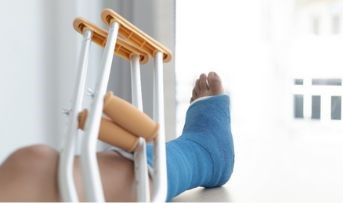
Signs of hairline fractures and tips to heal them effectively
Bone injuries are severe and painful. They make your life miserable, and everyday chores become a huge task. The post-fracture recovery takes a long time to heal the bone. It requires the patient to undergo complex procedures to ensure that the bone heals appropriately and that normal body functions are not obstructed. Although your body has exceptional capabilities to heal itself, you must still take extra care while doing daily tasks.
We all have fallen at least a couple of times in our lives. We bruise, get cut, bleed, sprain, pull a muscle, or break a bone. There is always a risk of a hairline fracture. You must be aware of the term and how risky it can be. If you are somebody who is a stranger to the concept of a hairline fracture, do not fret. This blog discusses what it is, the signs of hairline fractures, and tips for healing them effectively. Let’s begin!
1. What is a hairline fracture:
Hairline fractures are also known as stress fractures. These fractures occur when small cracks appear and grow on the bones of your foot, lower leg, and hands. Hairline fractures are often observed in the bodies of people with a lot of footwork, like jumping, running, hardcore workouts, and other athletic activities in their routine. Moreover, in other cases, hairline fractures result from accidents and collisions against hard surfaces, during which the bones in your body bear an impact and get fractured.
2. Causes of hairline fractures:
As discussed above, excessive and heavy footwork involves activities that put a lot of continuous strain on your foot and ankles. Bones are very rigid parts of our body and can bend only to an extent to maintain the smooth functioning of the ball and socket joints. Persistent pressure on the bones also affects their elasticity and can develop minor stress or hairline fractures.
3. People at risk:
Apart from those who play challenging and heavy-impact sports and the ones who work out a lot might be affected by these hairline fractures with no warning. Genetic and biological factors like gender can influence a high risk of hairline fractures. These fractures are usually common among females.
Physical abnormalities (arched foot, etc.) or using the wrong footwear could also put your bones under stress, even while doing menial chores. Osteoporosis, or weak bones, a history of fractures, and dietary insufficiency (lack of nutrient-rich food items that help strengthen the bones) are other factors that can cause hairline fractures.
4. Signs and tips to heal:
Shooting or sharp pain, inhibition of movement, swelling, inflammation, tenderness, and bruised patches indicate hairline fractures in your bones. You can consult a doctor and get an MRI or X-ray done to confirm their diagnosis in case you have a hairline fracture.
The first and foremost tip for healing the fracture is to rest completely and avoid doing any heavy tasks. Secondly, in the first one or two days, you need to ice the area using ice packs frequently. This will help in reducing the swelling. With the decrease in swelling and lower pain, you can slowly resume your daily routine with extreme caution. Consult a doctor who might recommend crutches, protective shoes (footwear), or a splint to help avoid putting the damaged part under stress and provide maximum support.
That’s all for the signs of hairline fractures and tips to heal them effectively. You must ensure to stay in good health as much as possible. Take the best precautions and remain vigilant. Another wise decision would be to purchase a personal accident insurance policy to avoid monetary stress during mishaps and protect yourself and your family. Explore your options and buy the best personal accident insurance policy that provides optimum protection.
Click HERE to learn more about the personal accident insurance policy.
Disclaimer: The information provided above is for illustrative purposes only. To get more details, please refer to policy wordings and prospectus before purchasing a policy.
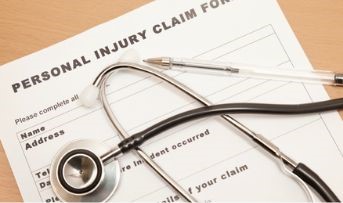
Personal accident insurance plans: Does your insurance provide full protection against contingencies
The recent Economic Survey for the year 2022-23 presented by the Government of India indicates a positive growth outlook for the Indian insurance sector. With the general insurance policy penetration rates at par with the global level, one may assume that all insurance policies are equally preferred in the country.
However, upon careful inspection, it is easy to realise that personal accident insurance plans do not enjoy such high penetration as popular insurance like health insurance, which is considered necessary. While many may think the formerly mentioned plan is sufficient to cover every contingency, the coverage against disabilities and personal accidents is often left out of the scope of consideration.
Defining personal accident insurance plans.
Personal accident insurance plans are a type of insurance that provides coverage in the event of an accidental injury or death. It offers financial support to help cover medical expenses, lost income, and other expenses that may arise from an unforeseen injury or death. Apart from monetary compensation, it also offers peace of mind to policyholders without worrying about the financial consequences of an unexpected accident.
The need for personal accident insurance plans with other insurance.
Buying health insurance only provides limited coverage for the illnesses and conditions included in the policy, leading many to believe it is enough to provide comprehensive protection against adverse events affecting one's well-being. However, this assumption is flawed, as can be understood from the definition above. Hospitalisation due to the policyholder's illness is a prerequisite for raising a successful claim. In case of only accidents or injuries, the policyholder is left unprotected, making purchasing personal accident insurance plans essential.
1. Coverage extent:
Health insurance only provides compensation in case of the policyholder's death or hospitalisation due to specified illnesses. It offers no specific coverage or payouts for accidental death or injury. Personal accident insurance plans supplement such cases by covering accidents caused during travel, work, commute, etc.
2. Financial compensation:
One of the benefits of personal accident insurance is that it provides financial support to help cover medical expenses and loss of productive capacity due to an accidental injury or death. This way, hospitalised policyholders who cannot return to work for a stipulated period are offered a daily cash allowance and additional benefits for their dependents, like children's education and transportation allowance.
3. A broad scope of disability coverage:
Most personal accident insurance plans offer coverage for accidental death, permanent partial or total disability, or temporary total disability. This provides incidental disability or death coverage regardless of the cause, unlike health insurance. Therefore, personal accident insurance plans offer peace of mind to policyholders about the financial consequences of an unexpected accident.
4. Flexibility of coverage:
Personal accident insurance plans are generally more affordable than other insurance types. They are also flexible, allowing policyholders to choose the ideal coverage for their needs and budget, making it accessible to a broad range of potential policy purchasers.
Standard exclusions to keep in mind.
Like every insurance product, personal accident insurance plans exclude certain factors such as natural death, high-risk work environments, childbirth or pregnancy, suicide, and self-inflicted injuries. Accidents caused while participating in extreme sports, under the influence of intoxicants, or while engaging in criminal activities are other reasons that most insurers do not provide coverage.
Despite their exclusions, personal accident insurance plans are excellent supplements to health insurance and provide relatively comprehensive protection against the financial impact of accidental injury or death. We urge you to consider purchasing personal accident insurance plans to protect against unforeseen accidents.
Click HERE to browse through different personal accident insurance plans.
Disclaimer: The information provided above is for illustrative purposes only. To get more details, please refer to policy wordings and prospectus before purchasing a policy.

Lost your car keys? Here’s what you should do
Losing your traditional car keys is a minor concern as you can quickly get a duplicate key made by the car service centre. However, as vehicles have become more technologically sophisticated, getting new keys can be more technical and expensive than ever.
It can take several steps and leave a dent in your wallet to replace a lost or stolen key, depending on the type and model of the car you drive. Fortunately, when comparing new car insurance rates, you can purchase an add-on coverage to protect your car keys.
While the add-on cover can limit your expense, here's what you should do if you lose your car keys.
1. Verify carefully:
Before deciding, conduct a comprehensive search for the keys everywhere. Retrace your steps and cover all the spaces you may have placed your keys.
2. Inform your insurance provider:
When you lose your key, the first thing is to write to the insurance provider and tell them what happened. With a misplaced key, there is a considerable risk of vehicle theft. Additionally, they may require the submission of an FIR filed with the nearest police station.
3. Reach out to a franchised dealer:
Contacting a manufacturer's dealer for your car is recommended if you need an OEM replacement key. It frequently costs money and takes time to obtain. If your original key offered features like a hands-free boot release, you will receive a new key identical to it in addition to programming for those features.
4. Decide on your car's essential type:
If you lose the existing key and have no spare, consider switching your key type. Traditional transponder, FOB, and intelligent keys are options to choose from.
How to recover different kinds of keys.
1. Traditional key:
You must put a conventional car key into the ignition cylinder to start your vehicle mechanically. If you misplace your car keys, you can phone an auto locksmith, who can immediately make you a new key. You might need a new ignition lock cylinder and key from the dealer or another repair facility.
2. Transponder key:
These keys are more advanced and detected by the Electronic Control Unit that starts the engine. A skilled electronic locksmith can help as they have spare keys equipped with the same tuning chips as your car. But they bill you more than they would have for a regular car key.
3. Smart key:
Modern vehicles almost universally include push-button start and keyless entry. However, we advise keeping a spare in your glove compartment for emergencies. If you lose your keyless entry FOB, you can buy a spare key or have your car towed to the closest brand dealership, where they will program a new FOB to pair with your vehicle. Smart keys are the most expensive set of keys among all types, and you should only get them from your authorised car dealer.
Losing your car key is not a significant concern as there are several ways to recover a new one or attain a spare key. Also, consider purchasing key protection coverage while evaluating new car insurance rates for comprehensive coverage of your car and its key. It's always a safe option to watch out for your car keys and keep them safely in your pocket and avoid leaving them unattended.
Click HERE to buy comprehensive car insurance.
Disclaimer: The information provided above is for illustrative purposes only. To get more details, please refer to policy wordings and prospectus before purchasing a policy.
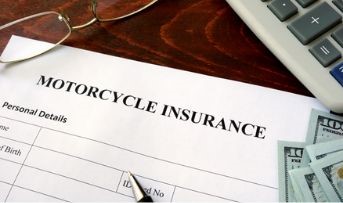
Should you opt zero depreciation add-on for your bike that can increase your settlement amount
When looking to purchase bike insurance coverage, there are a variety of options available. A comprehensive policy with zero depreciation add-on coverage is among the most used motor insurance policies.
This post will discuss the advantages of purchasing the zero depreciation add-on, how it improves coverage, and most importantly, whether the higher price is justified. To learn more, keep reading.
What is zero depreciation on bike insurance?
As a policyholder, you must be informed of the numerous crucial provisions of bike insurance. The depreciation component is one of them. Depreciation is nothing more than a loss in value that occurs over time. The bike and its components experience normal wear and tear over time. The result is depreciation.
When you file a bike insurance claim, the depreciation factor comes into play, and your claim amount is reduced. This is why you want to think about acquiring zero-depreciation two-wheeler insurance. You can purchase this add-on coverage along with the complete bike insurance plan. No matter how old or the bike has depreciated, the insurance company will pay out the entire claim amount when you have a zero depreciation cover.
The benefits of bike insurance with zero depreciation.
● More compensation: With a zero depreciation add-on, the cost of repairing your bike is covered without accounting for the bike's diminished worth. Consequently, you are reimbursed for the entire coverage.
● Saving money: You pay a higher cost with a zero depreciation add-on. But it's also true that your insurer will pay you more when you file a claim. Additionally, if you get insurance from an insurer that permits limitless zero depreciation, you can save money each time you file a claim for your motorcycle.
● Abundant coverage: Every bike owner can benefit from a zero depreciation add-on cover, valid for inexperienced and seasoned drivers. This acts as additional insurance to handle any financial problems arising from any catastrophe with your bike.
● Restrictions on out-of-pocket charges: With this add-on coverage, you can limit any additional costs that an insured person would otherwise be required to pay as depreciation charges. The depreciation value will not be considered when settling your claim, though, if you already have this add-on coverage.
● Reduces mental stress: The zero depreciation add-on cover provides a second layer of protection, which gives you more peace of mind by reducing your financial stress to a large extent.
When is a zero depreciation add-on cover required?
1. If you've only just started riding:
Compared to seasoned bike riders, new riders are more likely to make mistakes that result in collisions and bumps. Therefore, a zero depreciation cover would benefit you if you have just started riding two wheels.
2. If you purchased a new bike:
Since new bikes are so expensive, you should cover them as much as possible with protection. You may aid yourself at this point and preserve your bike in excellent shape for longer by getting a decent zero depreciation cover.
3. If you drive a pricey automobile:
If you possess an expensive bike, you should purchase the zero depreciation rider. A costly motorcycle requires a lot of money for repair and maintenance. Thus, you should be reimbursed for the total cost of each repair each time.
4. If your neighbourhood is dangerous:
Some neighbourhoods are crowded or prone to accidents. Acquiring zero depreciation insurance will benefit you if you live in such a location.
Reminders regarding the zero depreciation add-on cover.
Keeping the zero depreciation add-on cover in mind will help you recall the following:
● It is offered for new bikes up to two years old
● This addition does not waive the required deductibles
● Most insurance companies permit claims with no depreciation addition twice per year
A comprehensive bike insurance policy provides additional financial security if the bike sustains damage. Furthermore, a zero depreciation add-on to comprehensive insurance strengthens and adds more security when you file a claim. The most incredible thing about this addition is that by avoiding depreciation reductions, it can raise the amount of your claim. If the zero depreciation add-on is offered when you renew the bike insurance plan, you should consider opting in.
Click HERE to buy the best bike insurance plan in India.
Disclaimer: The information provided above is for illustrative purposes only. To get more details, please refer to policy wordings and prospectus before purchasing a policy.

Read the insurance fine print if your bike has a high engine capacity
Over the years, there has been a significant and gradual increase in the demand for luxury goods globally. In the automotive industry, superbikes are an excellent example of the shift from only necessities to splurging on comforts and luxuries. Once considered only for racing enthusiasts, high-capacity motorcycles with an engine capacity of over 150cc are now being used for recreational purposes and commuting.
However, the recent cases of rejected claims by motor insurance companies for accidents involving superbikes have raised concerns over the technicalities of insurance contracts and their effectiveness in shouldering financial losses.
Read on to find out about one such case, the aftermath, and some tips to ensure that your policy covers all such damages if your bike has a high engine capacity.
Case study:
This claim settlement case involved a bike with an engine capacity of over 340cc, which faced an accident, resulting in the rider's demise. The motor insurance company denied the claim since the bike insurance policy included a clause that stated that it should not cover personal accident claims involving bikes or scooters with over 150cc engines.
While the claim was initially denied, the motor insurance company later released the sum to the insured's family and clarified the issue. The insured was covered under an outdated policy that they had since updated to include personal accident cover.
This brings us to our question, is a high-engine capacity bike not covered under bike insurance?
While the case in question may make you believe that superbikes are not included under the provisions of bike insurance policies, it is not the case! The legal requirements of an insurance contract are constantly tweaked to provide maximum benefit to the insured while ensuring that the motor insurance company is aware of all the facts regarding its client to ensure that no insurance fraud occurs. While the old insurance clause excludes personal accident covers, potential policy buyers should read the fine print of their insurance documents to ensure that they are provided with the most recent version of the insurance policy that maximises inclusions.
General engine capacity and usage inclusions as per the old rule:
The old rule prevents the insured from lodging personal accident claims for motorcycles with an engine capacity greater than 150cc. Generally, 2-wheelers with an engine capacity of less than 150cc are used for commuting purposes only. They are, therefore, less risky and more profitable for the insurer since accidents are relatively fewer when compared to bikes with high engine capacity. High cc bikes are expensive, have lower mileage, higher premiums, and have less fuel efficiency.
Tips to ensure that all relevant damages are included in your policy.
As a prudent mechanism, insurance protects the insured in most cases as long as the circumstances are not stated as exclusions from the policy.
1. Read the fine print:It may seem tedious to go through the minute details of your insurance, but it is the safest way to ensure that your motor insurance company is providing you with the latest version of the policy with the most inclusions.
2. Consider purchasing an add-on: Despite close inspection, if specific clauses restrict the scope of potential claims, it is advisable to buy add-on facilities such as zero depreciation cover to keep your expensive possession safe.
3. Compare your alternatives: Before committing to an insurance provider, it is highly advised to compare the existing options and choose a plan with the most inclusions and justified premium with a high claim settlement rate.
4. Renew your policy on time: Delayed renewals and outdated coverage plans are significant issues that potential policy buyers must avoid.
Bikes with higher cubic capacity deliver a powerful performance, making it a worthwhile investment for motorcycle and speed enthusiasts to get their adrenaline rush. Since their cost and insurance premium is more significant than lower cc engine bikes, it is necessary to check the specifications your motor insurance company provides thoroughly. Read all the terms and conditions before making a final decision.
Click HERE to buy insurance from the best motor insurance company.
Disclaimer: The information provided above is for illustrative purposes only. To get more details, please refer to policy wordings and prospectus before purchasing a policy.
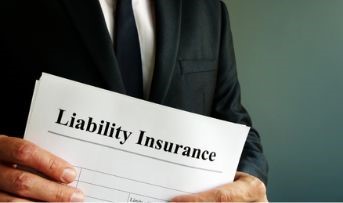
Is it compulsory to purchase public liability insurance
Public liability insurance shields policyholders from lawsuits brought by third parties for their injuries, damaged property, or other damages due to the insured's negligence. Many people, particularly owners of small businesses, are still determining whether getting public liability insurance is required. We'll look into the answer to that question in this blog post.
General liability insurance may, however, be mandated by law as part of the licensing or registration requirements for specific businesses or professions. Let's dive deeper and understand why purchasing public liability insurance would be better for you.
Reason 1:
It is strongly advised that you consider getting public liability insurance even if your profession or industry does not mandate it. This is because accidents can occur at any time and can be highly expensive to handle. For instance, you can be responsible for paying a customer's medical bills, lost earnings, and other damages if they slip and fall on your property. You would have to cover these expenses out of your pocket if you didn't have public liability insurance, which might be extremely expensive.
Reason 2:
Public liability insurance helps shield your and your brand's reputation. If a client or a public member is hurt or loses something due to your company's negligence, it could hurt your reputation and generate bad press. By having public liability insurance, you can show your clients that you care about their security and well-being and that you have the resources necessary to cope with any mishaps that might happen.
What should be considered while purchasing public liability insurance?
1. The amount of coverage you require should be carefully considered before buying public liability insurance. The level of risk involved and the kind and size of your organisation will determine how much coverage is necessary. For instance, a tiny home-based firm would need essential protection. In contrast, a larger company with many employees and risky operations might need higher security.
2. To make sure you know what is and isn't covered, it is also crucial to carefully read the terms and conditions of your public liability insurance policy. Before acquiring insurance, it's critical to be informed of any exclusions or coverage restrictions that might apply. Although you will depend on the insurance provider to cover any potential claims, ensuring they have a solid reputation and sound financial position is also crucial. Therefore, when buying public liability insurance, it's vital to carefully examine the degree of protection you require, review the policy's terms and conditions, and select a reputed and financially sound insurance provider.
3. Cost should be considered when selecting public liability insurance. The price of public liability insurance will change depending on the level of protection needed, the size and type of your business, and the insurance provider you select. Even if cost is a crucial element, it shouldn't be the only factor you consider. In addition to the protection, comparing the insurance cost to the possible costs of a claim or litigation is crucial.
In conclusion, even though many businesses do not think about acquiring public liability insurance, it is strongly advised that you consider doing so. Accidents can occur at any time, and if you don't have public liability insurance, you may be responsible for significant losses and costs.
Also, by acquiring public liability insurance India, you can show your clients that you care about their security and well-being and that you have the necessary resources to cope with any mishaps that may happen. Therefore, explore your options and purchase the best public liability insurance, which would cater to your organisation's and your client's needs in the best way and add the layer of security as required.
Click HERE to learn more about the benefits of purchasing public liability insurance India.
Disclaimer: The information provided above is for illustrative purposes only. To get more details, please refer to policy wordings and prospectus before purchasing a policy.
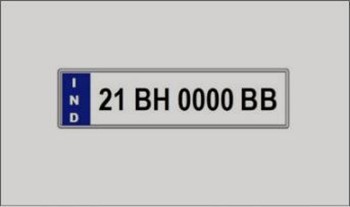
Let's decode the BH series number plates in India
We have seen cars with various types of number plates. Usually, the number plates of vehicles include the vehicle's registration and the state in which it was registered. There are VIP number plates too, which have digits in a unique combination and cost much more than the regular number plates.
In this blog, let's decode the BH series number plates that have been quite talked about recently in India.
1. What are BH series number plates?
In layman's terms, a car with a BH series number plate will not have to get a new registration card upon moving to a new state. These BH or Bharat series number plates were brought into execution in 2021 by the central government of India. It allows the vehicle owners of non-cargo automobiles to shift from one state to another without worrying about getting a new registration for their cars, two-wheelers, etc.
2. How are these BH series number plates useful?
The BH or Bharat series number plates have proven helpful for people in the government sector who frequently have transferable jobs, for people in the defence sector, or the private sector who regularly have to change their location to cater to the demand of their work and the companies they are employed in. These number plates allow them to avoid the hassle of exhausting themselves by running to the RTOs (Regional Transport Office) and getting a new registration for their non-cargo four-wheelers and two-wheelers.
3. Some information about number plates is essential.
The regular registration of a non-cargo vehicle involves limiting it to one state. The initial two letters of the number plates denote the state the car was registered in. For example, GJ for Gujarat, BR for Bihar, TN for Tamil Nadu, DL for Delhi, MH for Maharashtra, etc. The two digits next to the letters depict the district of the state of registration.
However, for regular registration, when a vehicle is shifted from one state in India to another, it is permitted to use its old registration and number plate for up to twelve months. After this period of one year, the vehicle needs to get a new registration at the RTO of that particular location. This new registration includes a NOC certificate, additional charges, and taxes, which will be informed upon your visit and consultation. The vehicle owner will be fined according to the costs of the new state if they fail to complete this process in time.
However, the registration process for BH series number plates began on the 15th of September 2021, and is entirely digital. Therefore, all your application work has to be done online. This avoids the struggle of commuting to the assigned government office and getting in line for your work to be completed.
A BH or Bharat series number plate will look something like this:
XY BH $$$$ XX
XY is the registration year, BH is the Bharat series code, $$$$ is the registration number of the vehicle (ranges from 0000 to 9999), and XX are alphabets from AA to ZZ indicating the category of the car.
The introduction of BH or Bharat series number plates provides a huge relief against this tiring and lengthy process for the people who have to move their families and house setup from one state to another quite often.
We hope this blog gives you insights into something new that benefits you or clarifies the BH series number plates. And while we are on the subject of cars, you must already be aware of the necessity of getting car insurance to safeguard your car during unfortunate circumstances which might lead to hefty damages. To choose which car insurance to buy, one of the most critical factors is to look at the standard car insurance price in India and compare different plans and their coverages accordingly.
Click HERE to learn more about the average car insurance price in India and which insurance would be beneficial for you.
Disclaimer: The information provided above is for illustrative purposes only. To get more details, please refer to policy wordings and prospectus before purchasing a policy.

If you’re not confident in completing the 8 track on a two-wheeler, this guide is for you
Cleaning a driving test to obtain a two wheeler licence seems complicated, and the application procedure for a rider’s permit often dissuades many people from learning how to drive a two-wheeler. Balancing, control, awareness, and judgement are parameters evaluated during the practical assessment.
One of the most commonly feared parts of the test is manoeuvring the 8-track. It is the perfect test of all the criteria mentioned and requires excellent balance and coordination. Additionally, steering ability and break application are also checked in the test.
If making an 8-curve on your two-wheeler intimidates you, here are some simplified steps to ensure perfect results each time!
1. Pre-ride check:
Before starting, ensure your two-wheeler is fuelled and has appropriately functioning brakes and indicators. It is also necessary to practise with your helmet on to prepare yourself for the actual test, where it is compulsory to ride with your helmet on. Before starting, we recommend warming up by doing short laps in an open area to ensure you are correctly seated and find the right balance.
2. Initial right curve:
Usually, making an 8 begins by taking a right turn to form a quarter of the 8. You do not need to use the indicators in this section, so just focus on steering. Ride slowly up the arc and proceed towards the mid-point by following the lane markings to aid proper steering.
3. Prevent understeering:
The second quarter or the arc of the 8 can be easily manoeuvred by ensuring you do not understeer. Understeering occurs when the handlebar is turned at an angle less than the desired angle. Again, follow the markings to get a better judgement of the angle of steering. Maintain your momentum and balance while making the turn.
4. Reverse S-shaped curve:
After crossing one-half of the track, instead of sticking to the inner edge, slowly shift to the outer boundary of the curve to complete the reverse S arc. You might steer at a wider angle than required at this stage, resulting in your bike crossing the track boundary. This causes a failure in the test. So, be careful and ensure you have a strong grip on the handlebar.
5. Final curve before exiting:
The final curve is the easiest since it requires central positioning and basic balance before exiting the track by turning on your left indicator.
All you need to do is ensure coordination between the clutch, gear shifting, and accelerator while completing the 8-track. Remove the fear from your head, and understand that it is all about balance! Take a deep breath and get through.
Additional tips to make manoeuvring effortless.
For a rider with experience, the steps mentioned above may seem excessively detailed, but a beginner may require additional inputs to follow the same. Keeping these in mind can help prevent mistakes and make it easier to steer through continuous curves.
● Shift your weight slightly as you steer your bike to maintain your balance
● Do not go extremely slow, as it makes balancing difficult
● Ensure that you do not shift your handlebar to either end
● Keep your body relaxed and elbows at right angles to distribute weight evenly.
Beginners often question the need to learn how to make an 8-curve on their two-wheelers perfectly. Although such opportunities are rarely faced on the roads, they prepare one for sharp turns, immediate application of indicators, balance, and coordinated judgements. These skills are fundamental requirements of a good rider and prepare one for all terrains and roads. Before you begin practising your figure 8 manoeuvre skills, consider purchasing two wheeler insurance India which covers any accidents and allied costs you may face.
Click HERE to buy the best two wheeler insurance India.
Disclaimer: The information provided above is for illustrative purposes only. To get more details, please refer to policy wordings and prospectus before purchasing a policy.

Know whether oversleeping can be bad for your health
We all follow different sleeping patterns and habits. Some people like to sleep more, while some tend to avoid sleeping at all. Many fall asleep the moment their head hits the pillow, whereas others struggle to get any sleep throughout the night.
Inconsistent sleeping patterns can be hazardous to health. It disintegrates the whole sleep cycle and leads to various health problems. Sleeping too little or too much can be problematic in their ways. But how is oversleeping a bad habit? How can it affect your health negatively?
There are several reasons why oversleeping is bad for your health and can lead to severe problems. These problems can affect your health adversely. You must always have a health insurance policy handy to deal with unexpected medical expenses. Also, ensure that you take care of your health insurance policy renewal to enjoy the seamless benefits without interruptions.
Let's look at various things related to oversleeping.
How much sleep is adequate?
The amount of sleep you should get throughout the day varies for different people. If you're unwell or tired, you will require more sleep. If you are young, you're likely to fall asleep faster due to increased physical activity.
It is recommended to get over 7-9 hours of sleep at night. Any sleep above this can result in oversleeping. The various ill effects of oversleeping are mentioned below.
● Diabetes:
If you sleep more than the designated time at night, you are likely to be on the verge of developing diabetes. Oversleeping puts one at risk of a spike in sugar content in the body. Even not sleeping enough can lead to the same problems.
● Back pains:
Research has shown that oversleeping can be one of the causes of back pain due to disoriented sleep positions for long hours. It is recommended to perform certain exercises to help you deal with such back pain and, most importantly, avoid oversleeping.
● Obesity:
Oversleeping can cause weight gain drastically. If you sleep more than 9-10 hours, you'll likely develop obesity over five to six years. The reason is that your body goes into relaxation mode while sleeping. Lack of physical activity reduces the BMR, impacts digestion, and results in fat accumulation.
● Depression:
Not just physical ailments, but oversleeping can also lead to mental health issues. People who sleep more than usual are likely depressed. While oversleeping, one decreases their chance of recovering from depression.
● Headaches:
If you're prone to headaches and migraines, oversleeping can worsen it. Whenever one sleeps more during the weekends, it can disrupt their sleep cycle. Irregular sleep patterns can lead to persistent headaches. This is because it fidgets with the neurotransmitters like serotonin in the brain.
● Heart disease:
A lot of research has been conducted to validate that oversleeping can lead to increased heart disease. It puts you at risk of developing cardiovascular disease due to a sedentary lifestyle and lethargy. Oversleeping causes obesity which in turn puts pressure on the heart.
● Impaired fertility:
Women who oversleep can find it difficult to conceive. It is also the same for women who sleep less than the given time. It can affect their cycle badly and disrupt the hormone levels in the body.
● Death risk:
It is alarming to note that oversleeping can lead to an increased risk of death. It can also be directly linked to the risk of developing a stroke.
Everyone should sleep only 7-8 hours throughout the day. It is best to avoid napping during the day to sleep better at night. One should also maintain a good diet and exercise to keep themselves fit and energised. Prioritise your health, practise mindfulness, develop a sound sleep routine, and invest in health insurance to keep away your worries. You should also complete your health policy renewal on time to avoid problems later.
Click HERE to get your health insurance policy renewal done.
Disclaimer: The information provided above is for illustrative purposes only. To get more details, please refer to policy wordings and prospectus before purchasing a policy.

Five home remedies to deal with insomnia
People with insomnia do not get enough sleep, and most of the days do not wake up feeling refreshed. The cause of sleep deprivation varies among individuals. Sleep deprivation is associated with various issues like weariness, difficulties focusing, mood fluctuations, and poor job performance. However, most cases of insomnia are caused by stress, an unpleasant experience, or abnormalities in the sleep cycle. Severe insomnia can only be cured via treatment. However, short-term insomnia is manageable.
If you have trouble falling asleep after retiring for the day, no matter how weary you are, here are some home cures you may try.
1. Yoga:
Yoga is considered a proven method to improve sleep quality and boost mental well-being. It also helps reduce stress, enhance physical performance, and increase concentration.
Remember to choose a style that emphasises moving meditation or breath work over strenuous physical motions. Slow, controlled motions help you to maintain your attention and concentration. Practicing the poses before going to bed might help you relax and unwind.
2. Meditation with awareness:
Mindfulness has been shown to improve well-being by lowering stress, building tolerance, enhancing good mood, and even strengthening immunity. It also has a positive influence on one’s sleep quality and schedule.
There are many free and commercial mindfulness videos, applications, and podcasts accessible online. People who want to experience mindfulness may decide to take a class, join a local weekly workshop, or visit a retreat.
3. Magnesium:
The magnesium generally produced in our bodies also aids in promoting a balanced sleep-wake cycle. Taking a daily magnesium supplement may help patients sleep better and for more extended periods. Consuming magnesium-rich meals, particularly in the evening, may aid in inducing better sleeping patterns.
4. Lavender oil:
For years and years, people have used this essential oil as a natural medicine to enhance sleep and produce feelings of relaxation. Lavender oil may be used as a pillow spray, patch, massage oil, or aromatic diffuser to help sleep. Lavender promotes sleep onset, healthy sleeping habits, and sleep patterns.
5. Practice sleep hygiene:
In its most basic form, sleep hygiene outlines a person’s nighttime habits and activities.
Individuals may improve their sleep hygiene by doing the following:
● Avoid computers, laptops, mobile phones, and televisions at least an hour before night
● Making the bedroom dark with muted lights, thick drapes, and blinds, or wearing earplugs and eye masks
● Avoid liquor, tobacco, and caffeinated drinks in the evening
● Maintaining a regular bedtime pattern that involves sleeping at the same time each night and waking up at the same time each morning
● Abstaining from eating large meals for dinner
● Take a hot shower or bath before going to bed
As per the studies carried out, insomnia is a frequent disorder with up to one-third of individuals suffering from it at some age. There are numerous cures and practices that a person who has insomnia might attempt to enhance their sleep. However, these home remedies will only work for people with minor insomnia.
We recommend consulting with a doctor for anyone going through chronic insomnia. Also, almost every health insurance covers the medical treatment for this disorder. Remember to get your health insurance policy renewal on time to avoid the last-minute hassle and avoid the lapsing of your current plan.
Click HERE to get a health insurance policy renewal.
Disclaimer: The information provided above is for illustrative purposes only. To get more details, please refer to policy wordings and prospectus before purchasing a policy.
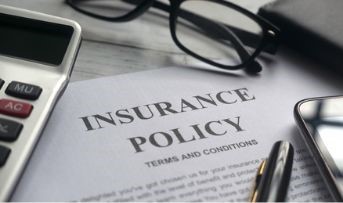
How careful inspection can help you avoid falling for these age-old insurance traps
Insurance policies, including non-general and general insurance plans, have gained popularity among Indians. While the increased penetration rate is a welcome change, protecting policyholders against potential fraud becomes essential. Insurance companies are taking adequate measures to spread awareness and educate potential policy buyers about possible crimes that involve fake policies, fraudulent insurance agents, mis-sold policies, etc.
This blog informs you about insurance traps you might be prone to and helps you elude them.
1. False alerts: reviving expired policies –
One of the many ways scammers trap innocent people is by calling them about policies that lapsed a while back due to payment failure. These dormant policies are then illegally accessed by telemarketers, who call up policyholders, informing them of good news. According to them, policyholders can now get a bonus on their policy, but you can only access it with a fee. They may also try to sell new policies. You can easily avoid this trap by being vigilant and reading the fine print of your policy.
To prevent scams and fraud, IRDAI is also regulating the insurance sector by digitalising it. An e-Insurance Account is a digital portfolio of all your non-general and general insurance plans, which helps keep track of policy tenures, switch, or buy policies at a single click without any hassle.
2. A guaranteed return providing investment sans market volatility –
The lack of financial literacy is mainly to blame for this misconception. As the uninformed public continues to hear of the short-term successes of a small section of well-informed investors who do due diligence before making their financial decisions, they crave similar results without putting in as much effort.
Taking advantage of the situation, insurance agents often pitch general insurance plans as alternatives to conservative investments like a fixed deposit and promise high returns. While the money put towards any insurance policy is a better investment than letting it sit idle, such claims are not backed by proof and must be avoided.
3. Getting pitched insurance policies as a tax-saving investment –
Tax planning is usually seen as a dreadful task that most individuals undertake only when essential. Therefore, some folks jump at it when the most effective sales pitch comes in, saying that an additional insurance policy would give you tax cuts (because of 80C) and would be a suitable investment. The tax-saving months before March are when these fraudulent pitches are made, and people need to determine whether the investment is necessary in the first place.
As the insurance sector evolves, insurers must make policyholders aware of the role of general insurance plans as a protective cover rather than a mode of investment to minimise your tax burden.
Your overall financial and tax planning for the following period should be done at the beginning of the current financial year. It is crucial to consider all factors, including your current investments, non-general and general insurance plans you might have taken, your kid’s school fees, and other expenses. Start early, and you won’t be in a hurry to reach the deadline, so you can read the fine print on all the documents and do apt research before signing on anything.
Click HERE to learn more about general insurance plans.
Disclaimer: The information provided above is for illustrative purposes only. To get more details, please refer to policy wordings and prospectus before purchasing a policy.

Is comprehensive car insurance truly exhaustive? Here's the complete guide
A car has the capacity for durable and comfortable rides, ensures safety, and is a significant investment. All this has given cars an upper hand over all the other vehicles.
Although buying a car can be easy if you have enough money, it is not always the only thing. With a car, there are a ton of other responsibilities. One is getting your vehicle covered and ensuring the car insurance renewal is done on time.
There are multiple options available for car insurance online and offline. This can leave you to require more clarifications. One such option lies in the comprehensive car insurance that covers almost every damage that might trouble your car. From man-made problems to natural disasters, you'll get compensation for all the damages. However, this insurance might cost you more money than usual. Is it worth to have comprehensive car insurance, or is it just exhaustive? Let's find out!
What is comprehensive car insurance?
Comprehensive car insurance is not mandatory insurance by law, but most people prefer to buy it. It is because it comes with many benefits that set it apart from the other options.
Comprehensive car insurance will cover own damage (OD) as well as third-party damages. It covers all damages due to natural calamities, accidents, theft, man-made issues, and even fire. Natural calamities like floods, cyclones, and earthquakes are covered. Acts like vandalism and riots are listed under man-made issues.
What are the benefits of comprehensive car insurance in India?
1. Complete coverage:
This insurance type is the only one that offers complete coverage to a car, including its total or partial loss due to own damage and third-party damages. It also compensates for the death or disability of the owner-driver, third party, or property damage.
2. Best returns on investment:
Comprehensive insurance eliminates the need to buy separate policies to cover own damage and third-party damages. All the benefits can be obtained from a single policy, including the personal accident cover. This helps in saving money and offers the best ROI.
3. Liberty to add optional covers:
You can purchase additional covers like zero-depreciation, no-claim bonus, tyre protection, engine protection, breakdown assistance cover, etc. This makes your base policy stronger.
4. Cashless benefits:
Yes! You may enjoy cashless benefits while claiming your comprehensive car insurance when you get your car repaired or serviced in a network garage. You don't have to pay even a single penny for the damages!
You may have understood what comprehensive car insurance is all about. But, did you imagine to whom this insurance type would benefit the most?
1. The city drivers:
Cities signify constant traffic jams, chaos on roads, and persistent risks of accidents due to overcrowded roads and indiscipline traffic situations. Metropolitan residents must buy this policy to provide all-round protection to their cars.
2. The adventurers:
If you love to plan road trips and explore places frequently, this insurance can do wonders for you during emergencies with its road assistance cover.
3. New owners:
If you have bought a new car, the first step should be buying comprehensive coverage to improve the longevity of your new asset.
4. Premium and luxury car owners:
If you own premium and expensive car, having this insurance in your investment portfolio can be fruitful.
5. Obsessed with your car:
Even a small dent or scratch on the car panics you. Then you must opt for comprehensive coverage to calm your nerves and stay stress-free regarding compensation for any damage to your car.
You should keep various pointers in mind while buying comprehensive car insurance in India. Owning an asset is a crucial responsibility and ensuring its safety is paramount. Comprehensive car insurance has seamless benefits that make it a reliable investment option and less exhaustive compared to its counterparts. Regardless of the policy you buy, get the car insurance renewal done on time to avoid your policy from lapsing.
Click HERE to get your car insurance renewal done on time.
Disclaimer: The information provided above is for illustrative purposes only. To get more details, please refer to policy wordings and prospectus before purchasing a policy.

Practise these habits to improve your cognitive skills
We have all heard the famous proverb, "a sound mind lives in a sound body". Both are integral parts that should be taken care of to lead a healthy life. In this blog, we will discuss some methods to sharpen your brain and polish your cognitive skills.
You can call your brain the control centre of your system since it processes all you see, hear, touch and think. Your brain perceives different sensations, sounds, images, etc., and conveys the signal to your whole body, signalling it to respond accordingly. Incredibly, this process happens within a matter of seconds.
It is crucial to take extra care of your brain's health and mental wellbeing. Dietary and lifestyle changes help combat cognitive-related issues such as mental health problems, anxiety and depression and help in enhancing creativity.
Here's how you can sharpen your cognitive abilities.
1. Relieve stress:
Develop a habit of taking walks daily and breathing in the fresh air. Other relaxing activities can include getting a massage, reading, meditation, etc. These activities help release the tension and stress from your body and lower your cortisol levels which tend to affect the memory sections of your brain.
2. Sleep well:
Sleeping at least eight hours a day is crucial to maintaining a sound mind. Quality sleep helps your mind commit things to memory and improve your brain's retention capacity.
3. Play:
Include games like crossword, sudoku, and puzzles in your daily schedule. These games intensify the usage of brain functions, thus helping in improving your reasoning and retention abilities.
4. Doodling:
Recent research has proven that doodling and colouring activate your brain's reasoning and problem-solving region. These activities enhance the blood supply to the prefrontal cortex and strengthen your mind's analytical and attention capabilities.
5. Dark chocolate:
Dark chocolate has been proven good for your physical and mental health. Studies have found that it contains flavanol, a substance that boosts your brain's memory retention, functioning, and processing abilities.
6. Reduce sugar consumption:
Consumption of carbohydrates and a sugar-rich diet can slow down your brain as your body takes time and energy to break down these substances. Consuming too much sugar also leads to depression and heart diseases, thus risking your physical and mental health.
7. Exercise:
Research has shown that lifting weights help in improving cognitive abilities. People who lift weights tend to increase their spatial memory. It helps in memorising the environments one is in at any given moment. Spatial memory enables you to remember layouts of a room or how you arrange things in your space. People who achieve their physical goals by walking strengthen their verbal memory.
These are some techniques that can help improve your cognitive skills. Apart from the above tips, you may even practise mindfulness by indulging yourself in daily yoga and meditation sessions. Yoga and meditation These healthy practices can keep your brain active and impact your productivity.
A wise option would be to protect your and your loved ones' health against unprecedented circumstances. To stay monetarily stress-free in health emergencies, explore multiple options and purchase the best health insurance policy in India.
Click HERE to know more about how you can buy the best health insurance policy in India.
Disclaimer: The information provided above is for illustrative purposes only. To get more details, please refer to policy wordings and prospectus before purchasing a policy.

Here’s how smart helmets are set to change the riding experience
Helmets are protective headgear that can save your life in case you fall from a running two-wheeler or collide with another vehicle. Also, wearing a helmet while riding a two-wheeler is compulsory under Section 129 of the Motor Vehicles Act, 1988.
Imagine if a helmet can detect drunk driving, location tracking, navigation, a hands-free device, and several other functions other than just protecting your head during a ride. Yes, this is all possible with the advent of intelligent helmets.
This article tells how smart helmets are set to change your riding experience.
1. Detecting a helmet:
Many two-wheeler riders do not wear a helmet intentionally. Also, some may forget to wear it while leaving home or the office. This can be dangerous to their lives in case they meet with an accident on their way. Smart helmets are equipped with Force Sensing Sensor (FSR) that detects whether the rider is wearing a helmet. It senses actual human touch. If it does not detect it, you will not be able to turn on the ignition of your two-wheeler.
2. Alcohol sensor:
Smart helmets can also be fitted with a gas sensor that can identify the alcohol content from your breath. It can be placed right in front of your mouth, detect if you are drunk, and prevent your vehicle from starting. This can be very helpful in avoiding an accident due to drunken driving.
3. Accident detection:
Smart helmets can detect accidents and alert a phone number by sending a message. It makes use of accelerometers and vibration sensors for this purpose. A free-fall sensing unit can detect when the two-wheeler falls freely and is not in control. Similarly, a vibration sensor senses signals and pressure and sends a message to the registered mobile number. This can be life-saving in times of an accident as the receiver of the message can instantly rush to the accident spot or alert friends, police, and an ambulance to reach the spot.
4. Over-speeding and rash driving alert:
Smart helmets can also alert you if you are riding above the speed limit fed into it or are driving rashly. Such alerts warn you to reduce your speed and drive carefully.
5. Bluetooth connectivity:
Smart helmets can be connected to your bike and mobile phone via Bluetooth. This can allow you to make calls or answer them safely while riding your two-wheeler.
6. Navigation, location tracking, and recording:
Smart helmets come equipped with a GPS device that can accurately tell the rider’s location. This can be useful in times of emergency or theft of your two-wheeler. Also, they can help in navigation while you are riding your two-wheeler.
You can also install hi-tech cameras on your smart helmets. They can record and store all the details of your rides, such as speed, distance covered, time taken, etc. This can be very helpful for bikers and racers.
Smart helmets are a world in itself, with numerous options for adding or removing applications and additional devices per rider needs. They can completely change how you have been riding your two-wheelers. They help to make your rides much safer and technologically advanced than a regular conventional helmet.
Why just rely upon a smart helmet to alert and protect you in case of an accident? Choose from a wide variety of 2 wheeler insurance online after comparing them thoroughly. Protect yourself from any sort of financial losses that you may suffer due to an accident or theft of your two-wheeler.
Click HERE to buy 2 wheeler insurance online.
Disclaimer: The information provided above is for illustrative purposes only. To get more details, please refer to policy wordings and prospectus before purchasing a policy.
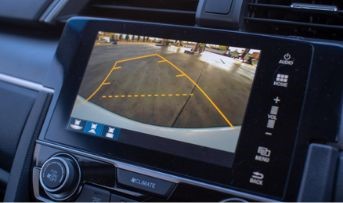
If driving in reverse scares you, here’s what you need to know
Reverse driving and parallel parking are two things that most people are scared of. Parallel parking takes some practice and extreme caution. The same goes for driving in reverse. Expertise in these driving techniques helps in becoming a skilled driver.
If driving in reverse scares you, here's what you need to know. This blog answers all your questions and more information on driving in reverse gear to understand how you can gain confidence over your anxious mindset about these driving techniques. So, without any further delay, let's get started.
1. It is not a big deal:
Many expert drivers get confused and anxious while driving in reverse. Due to nervous feelings, they might even mess things up and land in collisions. Therefore, it is vital to make yourself comfortable and relaxed in your position to get an accurate view of the traffic and the path you need to reverse.
You can place your foot on the brake and for your confidence, turn around to ensure you get a clear view of the pathway. Ensure that you keep your seatbelt intact and ask the passengers to fasten their seatbelts properly.
2. It is time for the reverse gear:
After positioning your seat, fastening your seatbelt, and adjusting your mirrors to get a clear rear and front view, you need to shift your gear to the state in which it indicates R, i.e., reverse gear.
After performing this entire process, you can slowly put your foot on the accelerator pedal and put slight pressure, just enough for your car to move, avoiding the risk of any collisions. Slowly release the clutch after putting your foot on the pedal. Drive the vehicle in reverse at a carefully vigilant speed, and park your car right where you want it to be.
3. Mirrors at the right angle:
You must always ensure that you keep looking in the passenger side mirror to be aware of any other vehicles or objects in the surrounding area, especially when driving in reverse gear. This will avoid any risk of collisions or accidents with things that might come your way. Mirrors even help you get a better view and understanding of available space to park your car correctly.
Some other tips to take care of while you are driving in reverse include placing your right hand on the steering's upper portion to gain optimum grip, going reverse in a straight line, stopping the car at the desired position slowly to avoid any jerking, doing a complete 360-degree check before you begin to reverse in a particular location, etc. Make optimum use of a rear parking camera that will assist you in observing the obstacles and parking your car precisely.
We hope this blog will help you drive in reverse more comfortably than before and help you alleviate your stress. Always wear your seatbelt while driving to ensure safety. And while we are talking about safety, understand the importance of purchasing car insurance to safeguard your car from financial distress due to damages. Therefore, to stay on top of your insurance coverage and continue to enjoy the privileges, you need to make sure that you take care of your car insurance renewal.
Click HERE to learn more about car insurance renewal and the tips you need to know when you pay your premiums.
Disclaimer: The information provided above is for illustrative purposes only. To get more details, please refer to policy wordings and prospectus before purchasing a policy.
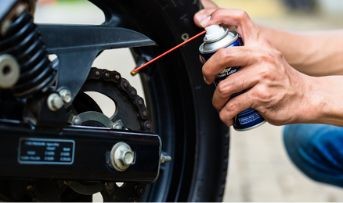
Here are some tips for maintaining your bike’s drive chain to ensure its longevity
A bike drive chain consists of interconnected oval loops made of metal, forming a roller chain. The teeth of a sprocket gear mesh with the holes in the links of the chain. The mechanical force from the engine puts the bike chain in motion, which causes the bike's wheels to rotate. Hence, a bike's drive chain is an important part and must be handled properly.
A drive chain is usually the dirtiest part of our bike. It is oiled and greased, catching loads of dust and mud from the roads. Here are some tips for maintaining your bike's drive chain to ensure longevity.
1. Periodic cleaning:
Regular cleaning keeps it free from dirt build-up, rust, and breakage. You should regularly check your drive chain by lifting the rear wheel of your bike off the ground and manually rotating the drive chain. You should check every chain link and use a firm brush to clean them.
If you hear squeaking sounds from the chain while riding your bike, it is time for relubrication. Also, you should check for tight links that are not bending easily. Clean them properly and lubricate them to ensure their free movement. It will also prevent rust build-up.
2. Lubricant quality:
Always use a good quality lubricant to ensure its longevity. It should be specifically made for a bike's drive chain and should not be just any lubricant.
Dirt and mud damage the drive chain. The lubricant should be such that it should minimise the accumulation of dust and grime on the drive chain. Also, it should be long-lasting as the drive chain will wear down and get damaged if the lubricant is less or missing.
3. Do not over-lubricate:
Over-lubrication is harmful to the drive chain. It will attract more dust, mud, and concrete from the roads and damage the drive chain. To ensure smooth operation, you should always wipe off excess lubricants with a rag.
4. Thorough cleaning of the drive chain:
In case you ride your bike through muddy roads frequently or use it on rough terrains such as a mountain, you should remove the chain completely when it becomes excessively dirty. You can remove it yourself or seek the help of a mechanic.
Use a good quality chain solvent available in the market and soak your chain in it for the prescribed time. Then scrub hard to remove the dirty grime from the chain links. The solvent will do its job, and your chain will become clean and grime-free. Relubricate your drive chain once completely dry, and put it back in the bike.
5. Stretched chains:
Sometimes your bike's drive chain seems to stretch and become loose. This is because of normal wear and tear of the chain with usage. A loose drive chain cannot provide a good grip for the movement of the wheels and may even slip from its cog.
Check for a loose drive chain regularly, and get it fixed as soon as you find one. Ignoring it may cause further damage to the drive chain, and you will have to replace it.
The drive chain of your bike is a very important part of its smooth running. You must take good care of the chain to keep it in its best shape. Clean it regularly and keep it sufficiently lubricated to ensure its longevity.
Buying a good bike insurance policy for your bike is another important thing that you need to do to ensure a glitch-free ride. Buy bike insurance online after comparing it with the policies of several companies. You can do this from the comfort of your home or office without physically visiting any insurance company. Go for the best bike insurance policy as per your specific needs and enjoy complete protection, security, and peace of mind.
Click HERE to buy bike insurance online.
Disclaimer: The information provided above is for illustrative purposes only. To get more details, please refer to policy wordings and prospectus before purchasing a policy.
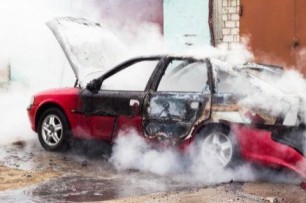
Tips for finding a short circuit in your car's system
An automobile comprises interconnected mechanical elements and complicated electrical wiring technologies. While we may enjoy contemporary comforts such as stereos, interior lighting, and even hologram speedometer readings as long as the electrical systems function correctly, all systems and components come to a standstill on account of short circuits.
A short circuit is a wiring fault because of a loose or defective wire that shunts electricity between courses before it hits its target. Although the signs of a short circuit are similar to those of an open circuit, the diagnosis is somewhat different. A short circuit may happen in various ways, and it's not always straightforward to locate and fix.
However, to understand how to discover a short circuit, we must first grasp how a perfectly working circuit operates. So here are a few tips for locating a short circuit in your car.
1. Make a map of your vehicle's circuit:
Remove the wire harness from your vehicle and turn to your Early Warning Device (EWD) to start diagnosing the circuit. Identify the various cables and circuits you're inspecting so you know where to go next. Wire colours should match the colours specified in the EWD. However, this may differ based on where you obtained your EWD.
2. Examine any exposed wiring:
One may also save time and effort by inspecting any exposed wires first. You may find a damaged or chafed wire that you can immediately begin mending. However, since most automobiles' wiring is tightly wrapped, you'll almost certainly need to try a few boards to figure out where the issue is.
3. Inspect all wires for faults:
If you feel a specific wire causes the problem, you may detach its connection at either the sensing or loading ends. Check your test indicator to see if it fades out or your multimeter to check if it stops buzzing. Next, you may remove your car's panelling and inspect the wires to see if you can pinpoint the problem.
4. Testing the 5V circuit:
In case the short is a 5-volt circuit, the Engine Control Module utilises it to regulate the gearbox and engine. You may unplug the battery first, then the ECM. It'll also enable you to identify electrical oscillations and approximately pinpoint the location of the short circuit.
5. One-by-one assess all the fuses:
Check the fuses and look for any easy, quick short circuits. Take a fuse at random and attach your testing indicator to its socket terminals. If a current is detected, the test LED will light up. If the test light does not ignite, it may suggest that electricity is not flowing to that fuse. This indicates that the damaged wire is along that route.
Knowing how to detect a short circuit may save you a lot of time and money while ensuring that your car is safe and perfectly operational. While it might be time-consuming, utilising the approach mentioned above should provide you with the knowledge you need to detect and fix any short circuit in your vehicle.
However, if you still face difficulty identifying the origin of the short circuit, visit the nearest garage. It is ideal to have your vehicle backed by insurance for even minor expenses like these. Search for the best car insurance in India and get yours right away to cover your vehicle against damages caused due to unexpected short circuits.
Find the best car insurance India for your vehicle HERE .
Disclaimer: The information provided above is for illustrative purposes only. To get more details, please refer to policy wordings and prospectus before purchasing a policy.
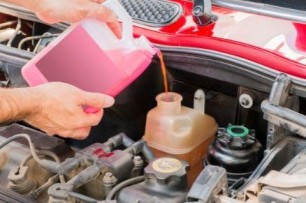
Top car care tips during the summer season
Be it the summer season, winters, or heavy monsoon, you need to take care of a few things to ensure your car's proper functioning and longevity. While external servicing and maintenance of your car are crucial, some particular factors ensure that your vehicle is up and running.
The summer season brings in good weather. But the drastic temperature rise can harm your car. In this space, we will discuss tips for caring for your vehicle during the summer season to keep it in good condition.
1. Cooling your engine:
Engines getting heated due to high temperatures are one of the significant causes of car breakdowns in summers. You can cool off the engine by using cooling systems in your car as recommended by the manufacturer.
2. Coolant refill:
To keep your cooling system in excellent working condition, make sure to refill the coolant according to the overflow status. According to most manufacturers, the cooling liquid mixture usually contains a fifty-fifty water to coolant ratio.
3. Inspect your car:
Some parts of your car are susceptible to heat damage and may deteriorate in high temperatures. Examine your vehicle, and replace any wear and tear or other damages as soon as possible. Also, keep an eye on the coolant leakages due to fuel expansion in summers.
4. Tyres:
Take a close look at your tyres. If they appear to be more inflated than required, get them checked. It's necessary to regularly monitor the air pressure levels in your tyres during the summers.
Failing to do so might risk a tyre blowout which can be a considerable safety risk, especially if you're on the road, examine your car tyres for signs of wear and tear and replace them if you find any damages.
5. Corrosion:
Once your vehicle reaches a specific limit, it is recommended to check your ignition system. The electrodes might corrode or wear out, so replacing the spark plugs is the solution to combat any ignition issues.
6. Air conditioning:
Examine the air conditioning of your car, especially in the summer season. Any defects leading to the disruption of the air conditioner can cause massive discomfort during your travels in such rising temperatures. Also, ensure that you inspect the compressor clutch while checking the air conditioning system.
7. Wipers:
The wipers of your car play an integral role while you're driving. They clear the windshield, making it easier to see while you drive. Replacing the wipers for the summer season with new ones would prepare you for the storms or rainy downpours midseason.
These were a few expert car care tips you will need to take care of your vehicle during the summer season. Apart from these tips, consider protecting your car against unprecedented circumstances. Emergencies like road accidents or damages to different parts of your vehicle can lead to heavy monetary expenses. To avoid paying a massive sum of money in such unforeseeable situations, you can explore various options and purchase car insurance online in India.
Click HERE to know more about how you can get car insurance online in India.
Disclaimer: The information provided above is for illustrative purposes only. To get more details, please refer to policy wordings and prospectus before purchasing a policy.
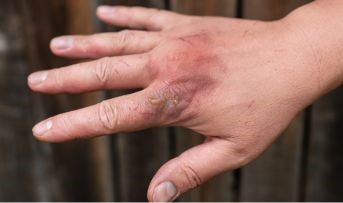
Here are the best tips for administering first aid for burns
First-aid tips and techniques have been a part of our educational curriculum since junior school. We all have learned the first-hand treatments one must do when there is a manageable injury or burn on our or someone else’s body. However, with time and as the level of injuries and diseases evolved, our knowledge about first aid falls short in terms of adequacy in the healing process.
Moreover, burns can happen anytime, primarily if operating around heavy machinery, fire, or in the kitchen. And it requires a lot of time to heal with proper care, ointments and medications, and extra precautions.
But what are some of the best ways to take care of these burns? What items should you include in your first aid kit to help you or someone else? Are there different degrees of burns, and which type of burns can first aid easily?
In this space, we’ll clarify all your doubts regarding first aid for burns. Let’s get started.
1. Minor or major:
A burn usually indicates tissue damage when the skin comes in contact with high flames, boiling water, sunburn/radiation, chemicals with corrosive properties, etc. Before starting the burn treatment, it is advised that you determine the degree of the burn to alter your treatment accordingly and determine whether immediate medical attention is needed.
A major burn occurs when the diameter of the burnt area is more than three inches, resulting in brown, black, and white patches with a dry and leather-like texture of the skin. In case of a minor burn, blisters appear on the burnt area, usually less than three inches in diameter. You will experience pain and inflammation, which might cause redness and soreness on the burnt site.
2. What you should NOT do:
Before we tell you the first aid tips you should follow, you need to be aware of the contamination of the sensitive and burnt part of the skin. Avoid using home remedies like butter, ice, water, etc., and immediately do not take any medications or remedies without consultation.
3. Must know first aid tips:
Remove jewellery items like rings, bangles, etc., from the burnt area. Cooling off the burn is essential. You can gently use cold water on the burnt portion and wet compresses to help with the inflammation and lower the pain. If you see any blisters, do not remove or poke them, as they protect the area from infection. If you see a blister pop, gently clean it with a disinfectant solution and cover it with an antibiotic cream. To ensure that the affected area does not dry out, use skin-friendly and chemical-free moisturisers. Aloe vera is a good option in such cases. Use sterile gauze and tapes to bandage the burn, but ensure that you do not tighten the grip of the bandage. Keeping it loose will prevent excessive pressure and alleviate pain.
You can take any doctor-recommended painkillers if the pain gets unbearable and causes too much discomfort. Avoid heavy tasks involving the burnt area, and avoid using fluffy cotton as tiny threads of cotton might stick to the burn risking the chance of an infection.
We hope you found the blog helpful. You must take care of your body and be extra cautious about your health to lead an extraordinary life. But sometimes, your efforts might fall short in unfortunate circumstances. To alleviate the monetary stress of such times, you must purchase the best personal accident insurance India which will provide you and your family with a reliable layer of financial protection.
Click HERE to learn more about the benefits of buying the best personal accident insurance India.
Disclaimer: The information provided above is for illustrative purposes only. To get more details, please refer to policy wordings and prospectus before purchasing a policy.


